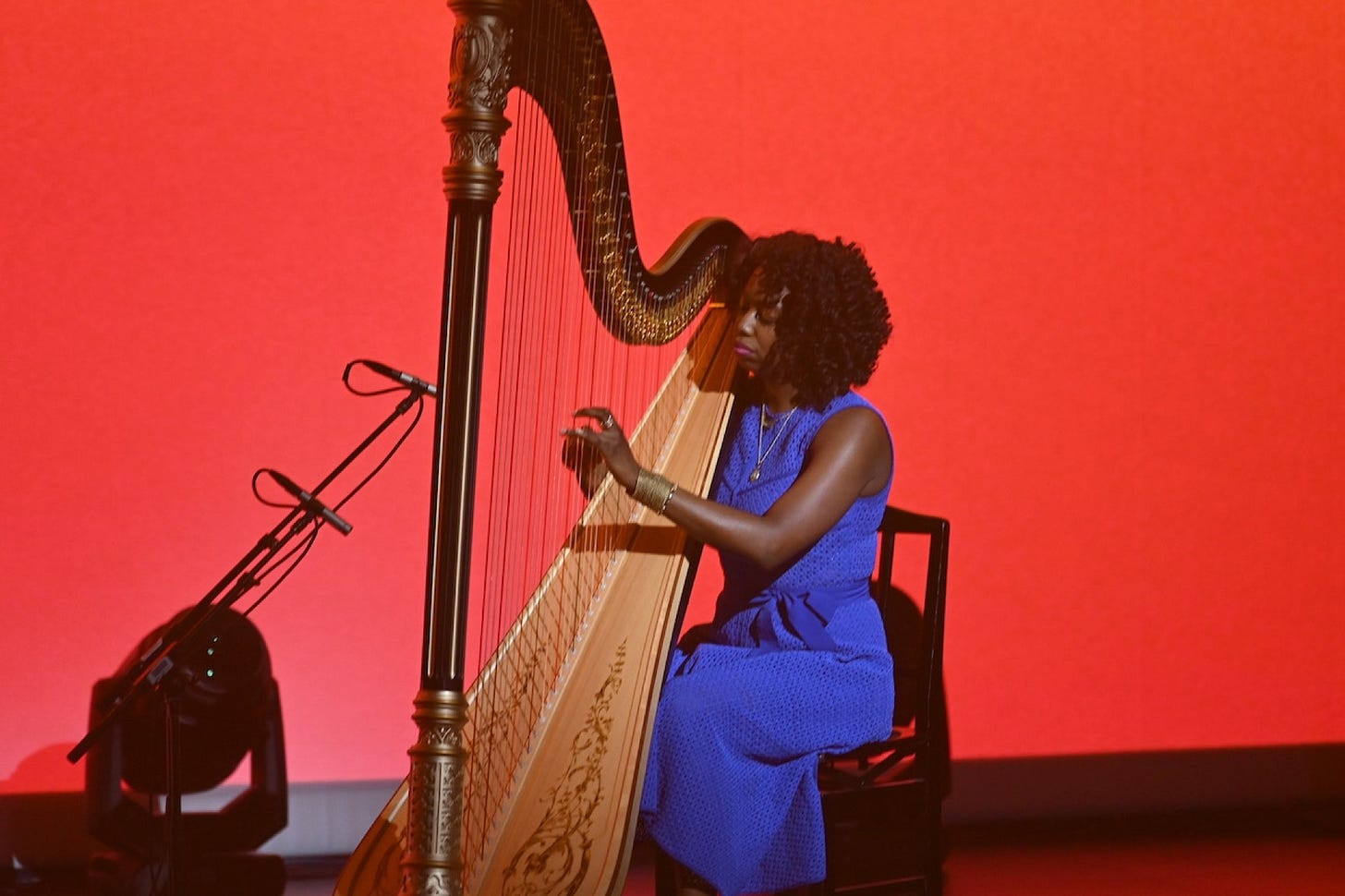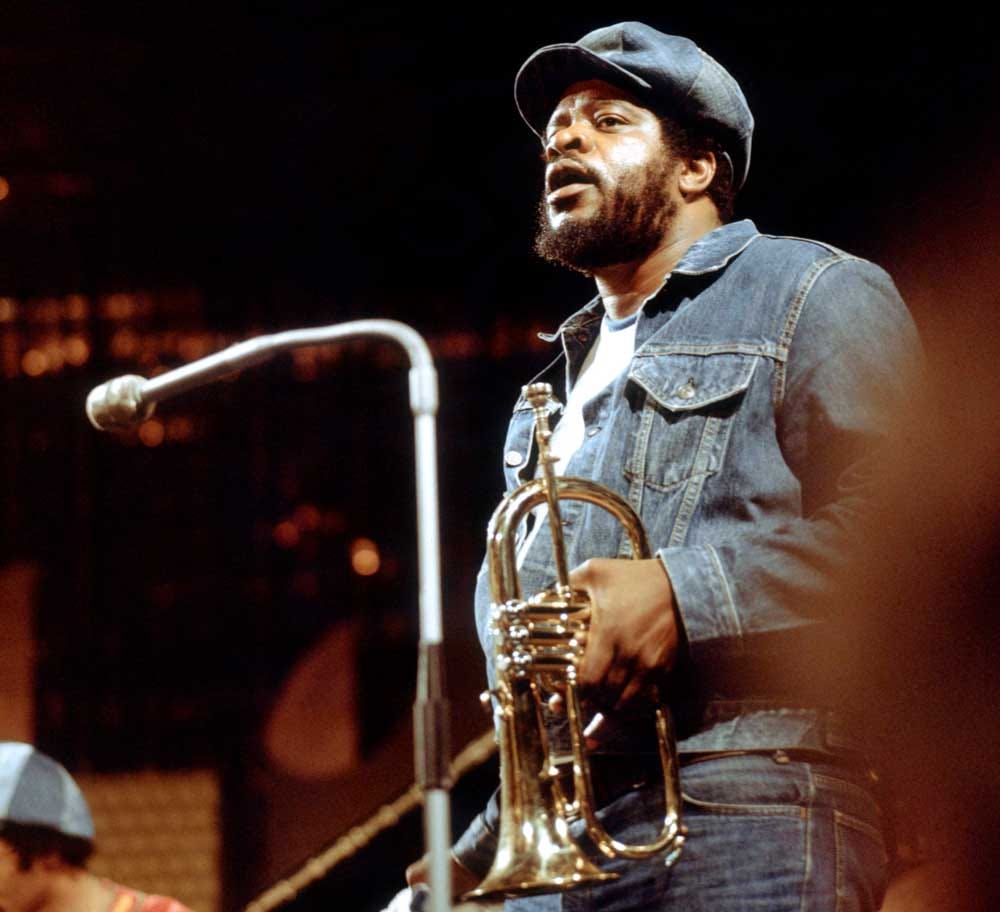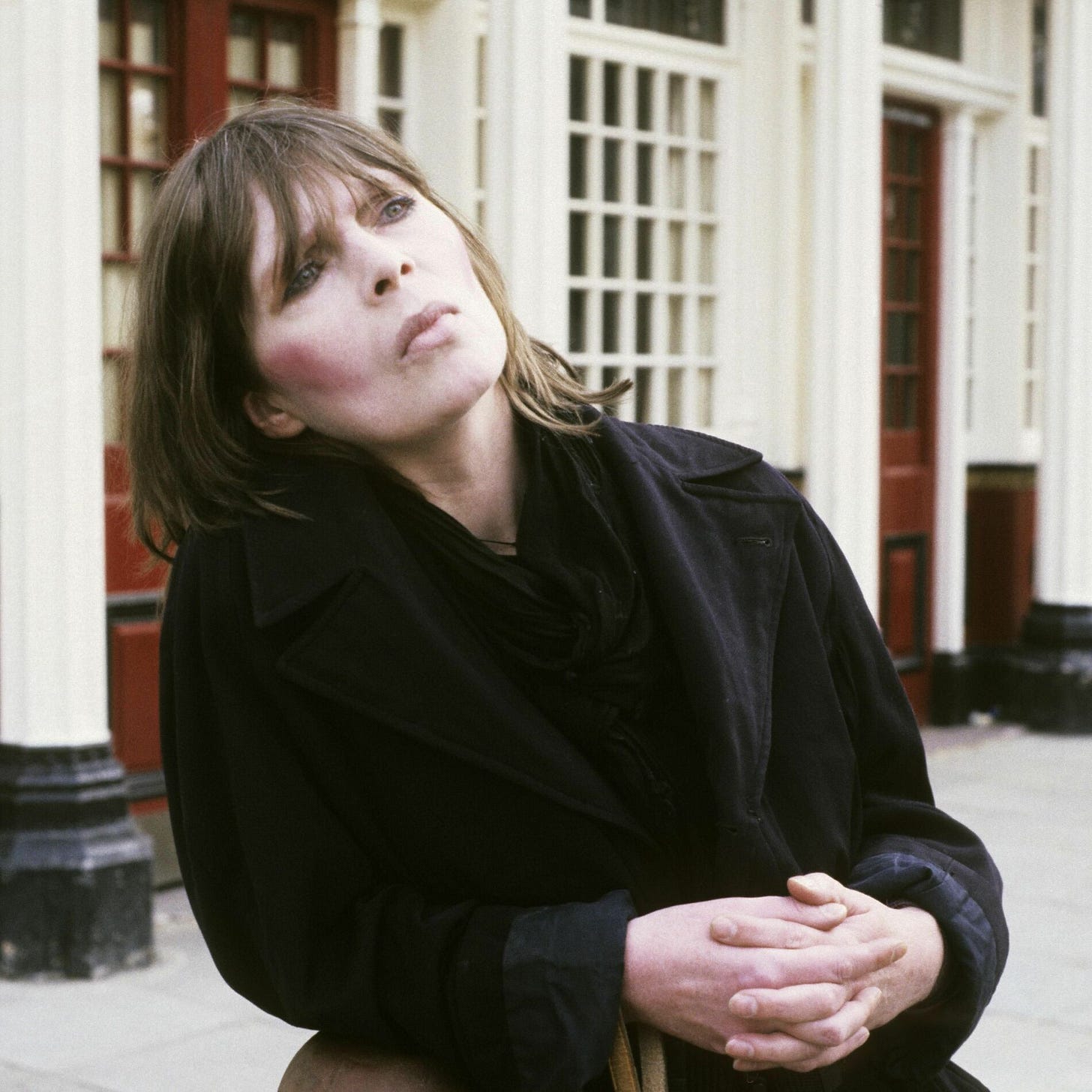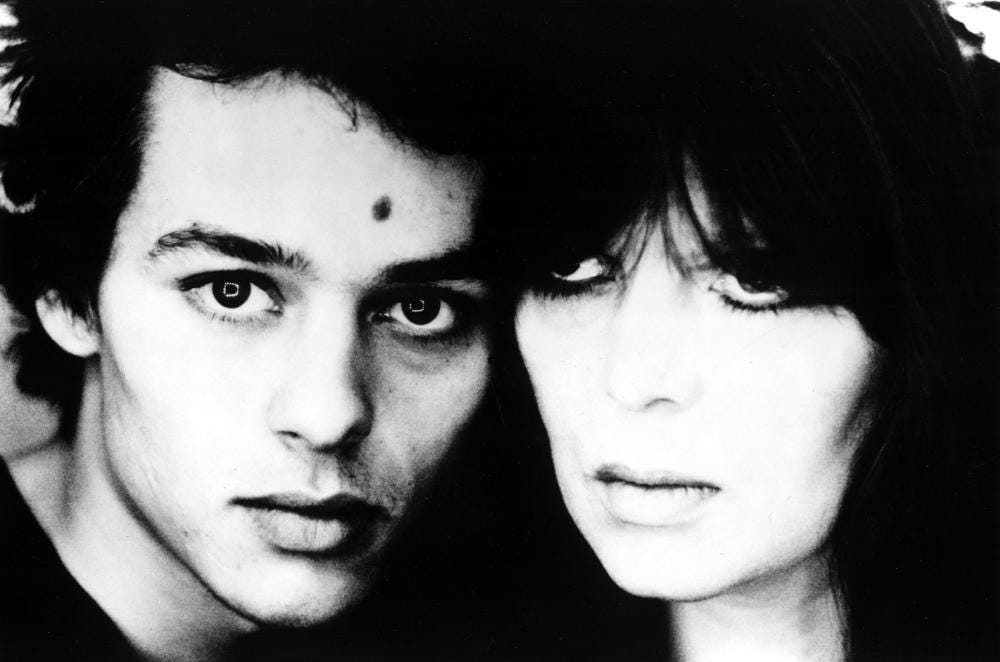TALES OF LOHR: IF YOU DIG DONALD BYRD...
An iconoclastic artist taking jazz in her own direction; plus, "This Week in Warhol" says farewell to Nico
IF YOU DIG…is a bi-monthly feature at TALES OF LOHR, spotlighting a current jazz artist whose style, influences, and vibe are sure to appeal to fans of old-school jazz cats that the music of these modern-day masters evokes.
If You Dig DONALD BYRD…
A few years ago, during my renaissance period as a practicing Catholic, I gave up jazz for Lent. It was a challenging and difficult experience, as any true act of Lenten repentance is meant to be, though admittedly easy from a logistical standpoint, as I had not yet then begun my stint as a writer for JazzTimes Magazine. I did manage to successfully make it through the 40 days, and when I got in the car on Easter morning to go to church, I knew just what album I wanted to put on the dashboard CD player to break my fast. So…what was it? Kind of Blue? A Love Supreme? Maybe some Billie Holiday with strings?
Nope. The album I’d been missing more than any other at that point in time was Places and Spaces, a 1975 fusion-infused Blue Note release by Donald Byrd, one of the artists who most successfully navigated the crossover from straight-ahead jazz to soul, R&B, and funk sounds without ever sacrificing or compromising the gritty, muscular might of his skills on the trumpet.
A native of Detroit, Byrd had played behind the legendary bandleader Lionel Hampton before he had even graduated high school. While earning his master’s degree from the prestigious Manhattan School of Music, Byrd inherited the trumpet chair from Clifford Brown in Art Blakey’s Jazz Messengers, and though his stint with this epochal band was a short one, he made a formidable mark on several of the group’s most electrifying ‘50s sides. In the 1960s, Byrd became a mainstay of the Blue Note label, a showcase for some of the finest hard-bop-oriented musicians in jazz, as well as for occasional envelope pushers like gone-too-soon multi-instrumentalist Eric Dolphy, with whom Byrd played in Paris only two weeks before Dolphy’s premature death at age 36. Throughout the decade, Byrd released a plethora of outstanding LPs; 1964’s spiritually inclined A New Perspective, featuring the stunning “Cristo Redentor,” is a personal favorite. Byrd’s 1961 Royal Flush marked the Blue Note debut of pianist Herbie Hancock, for whom Byrd would serve as a critical early mentor. It was Byrd, according to Hancock, who encouraged him to cut his first solo album for Blue Note; who urged him to join Miles Davis’ second great quintet; and who convinced him of the value of retaining his publishing rights, a gamble that paid off when percussionist Mongo Santamaria, who was introduced to Hancock by Byrd, turned the pianist’s “Watermelon Man” into a major hit single.
But in 1969, starting with his album Fancy Free, Byrd embraced the fusion movement, with its electronic instrumentation and interpretations of major soul and pop tunes. In addition to Places and Spaces, with its lovely album-closing rendition of The Temptations’ “Just My Imagination,” Byrd’s major fusion releases include 1973’s Black Byrd. Produced by Motown veteran Larry Mizell, the album’s title track made it all the way to the Billboard Hot 100, and spent several years as the top-selling LP in the entire Blue Note catalog. The album’s title spun off into Byrd’s mid-’70s group The Blackbyrds, best known for the smash-hit single “Walking in Rhythm,” which reached no. 6 on the Billboard Hot 100.
Much of Byrd’s later years were preoccupied with his efforts as an educator. He earned a PhD in music education from Columbia University’s Teachers College in 1982, and subsequently taught at Howard University, NYU, Cornell, and Oberlin, among numerous other august institutions. He continued to find musical connections to burgeoning popular sound movements, appearing as a featured soloist on the first two volumes of Guru’s mid-’90s jazz-rap Jazzmatazz series and lending samples of his ‘70s output to numerous major recordings of the acid jazz genre. Event though his last few albums before his death in 2013 skewed back into a straight-ahead aural space, Byrd will always stand tall as one of jazz’s finest cross-genre practitioners.
…Then You’ll Dig BRANDEE YOUNGER
From the jump, Brandee Younger stands out from the present-day jazz pack simply by virtue of her choice of principal instrument. Though a few memorable artists, most notably bebop trailblazer Dorothy Ashby, have lent their skills as improvisers to the harp, the instrument has never become a consistent fixture of jazz ensembles. Which, of course, only serves to make the music conjured by the Long Island-raised Younger all the more distinctive and compelling. And her prodigious gifts as a shaper and creator of spontaneous melodic inventions are matched only by her blissful disregard for the concept of generic boundaries. Younger’s talent has easily found itself flourishing in pop, trad-standard, and hip-hop contexts, and her work as a solo artist has, for the last several years, readily embraced this stylistic malleability, resulting in albums that sound like nothing else on the jazz scene today.
A graduate of The Hartt School of Music and New York University Steinhardt, and a student of the singular hard-bop alto saxophonist Jackie McLean, Younger made her public performance debut at a 2007 memorial for fellow polysonic innovator Alice Coltrane, at the invitation of the late pianist / composer’s saxophonist son Ravi. She has since racked up a veritable murderer’s row of collaborator’s credits, performing alongside everyone from free-jazz saxophonist Pharoah Sanders to evergreen drummer Jack DeJohnette to stunning “beat scientist” Mayaka McCraven (I saw Younger play live, mesmerizingly, as part of McCraven’s opening-night performance for the 2019 Pittsburgh International Jazz Festival). But she has also graced the recordings of a spate of major hip-hop, soul, and pop artists. She can be heard on works by present-day classic-style popsters Jane Monheit, Josh Groban, and Kat Edmonson; neo-soul wizards Moses Sumney, Bilal, and John Legend; old-school activist-vocalist Gil Scott-Heron; multi-faceted vocalist / bassist Meshell Ndegeocello; and a full deck of major hip-hop performers, everyone from The Roots and Common to A$AP Ferg, Lauryn Hill, and (on 2021’s before-he-went-full-Nazi Donda) Kanye West. In 2019, Beyoncé featured Younger’s composition “Hortense” in her critically acclaimed concert documentary Homecoming.
Younger currently divides her time as a teaching artist at NYU and The New School with solo releases that explore a brilliant range of sounds and stylistic approaches. “Beautiful is Black,” from her 2021 major-label solo debut Somewhere Different, made her the first Black woman to receive a Grammy nomination for Best Instrumental Composition. 2023’s sinuous, effortlessly genre-blending Brand New Life, released in tribute to her predecessor Ashby, earned her an NAACP Image Award for Outstanding Jazz Album (incidentally, I also selected it as one of the best albums of that year). Her latest release, Gadabout Season, dropped just last month, and it expands on Brand New Life’s sleek combination of jazz and contemporary soul sonics, while focusing more keenly on Younger’s skills as a composer. The overall sound is less funk-driven, more sensual than much of Donald Byrd’s output. But there is no doubt that, when it comes to skating across the entire range of musical possibility without ever forsaking a strong jazz perspective, Younger is in every way Byrd’s equal.
To Get You Started…: Though I might be inclined to ease you into the world of Brandee Younger via one of her more mainstream pop or hip-hop-focused collaborations, I think I’m gonna serve this up straight, with what I think was the best track on Brand New Life. Produced by McCraven and composed by Ashby, “Livin’ and Lovin’ in My Own Way” rides a coolly insinuating percussion undercurrent provided by hip-hop stalwart Pete Rock, a rhythm across which Younger is lush, romantic, inviting…yet assertive and powerful with every pointed, vigorous phrase and note. Never let the inherent ethereality of the harp fool you. Brandee Younger is all business, as this track makes beautifully, brilliantly clear.
THIS WEEK IN WARHOL
JULY 18, 1988
A strange, sometimes shocking, often sad life comes to its premature end, as Nico, one-time vocalist for the Andy Warhol-produced Velvet Underground and solo pioneer of the goth music subgenre, dies on the Mediterranean island of Ibiza at the age of 49.
The German-born vocalist / songwriter has forged an ineffable, influential sound even amidst a 15-year battle with heroin addiction. At the time of her passing, Nico has been enjoying a period of what is, for her, relatively clean and prosperous living. She has been touring regularly throughout Europe, Australia, and Japan, her music always having found a warmer reception from non-American audiences. In March of this year, she joins forces with regular collaborator James Young, part of a frequent Nico-backing ensemble known as The Faction, and guitarist Henry Olsen to compose a new suite of songs partially inspired by the work of another one-of-a-kind woman artist, Egyptian vocal diva Umm Kulthum. Young is enthusiastic about the prospects for the new material, which he suggests is strong enough to warrant serving as the framework for an album (Nico’s previous release, 1985’s Camera Obscura, will become her last solo studio LP). Nico debuts this music the month before her death, at a festival at the Berlin Planetarium. A recording of the concert, which concludes with a rendition of her song “You Forget to Answer,” from 1974’s The End… (produced by fellow former Velvet Underground member John Cale), is later released as the posthumous 1994 live album Nico’s Last Concert: Fata Morgana. Around the same time as the Berlin appearance, Nico joins Soft Cell lead singer Marc Almond in the studio, to record a duet track called “Your Kisses Burn.” Appearing on Almond’s solo album The Stars We Are, released in September of this year, it is Nico’s final studio recording.
Nico has come to Ibiza for a bit of post-tour rest and relaxation. Joining her on this getaway is her 25-year-old son Ari. Nico’s relationship with her only child has been as complex as much of the rest of her life. Ari is the fruit of a liaison between Nico and French actor Alain Delon, but the performer has never claimed Ari as his child and has consistently forsaken all paternal responsibilities. Nevertheless, Ari is raised largely by Delon’s mother and stepfather, as Nico’s lifestyle and addictions prevent her from being able to consistently care for the child on her own. Ari, who becomes a photographer and sometime model (he shares both his parents’ striking good looks), battles his own dependency on heroin throughout much of his adult life. Nico’s legacy has been clouded for years by unsubstantiated accusations that she personally introduced her son to the drug.
The day before her death, which is Ibiza’s hottest of the year, Nico leaves the lodging she shares with Ari on her bicycle, apparently heading downtown to purchase marijuana. She is later found by a passing taxi driver, lying unconscious by her bike near a roadside. Apparently, she has fallen from her ride and suffered a bad blow to the head from the pavement. The accident has induced a massive cerebral hemorrhage, but when she is finally admitted to a hospital (after several failed check-in attempts by the cab driver), she is misdiagnosed as merely suffering ill effects from the heat. At 8 p.m., on the 18th, she is officially pronounced dead.
Nico is cremated, her ashes interred near her mother’s remains in Grunewald, a forest cemetery in her birth city of Berlin. At her funeral, friends play her original recording of "Mütterlein,” a song from her 1970 album Desertshore (also co-produced by Cale). Nico’s legacy as a formative contributor to a powerful offshoot of popular music has been commemorated with tribute concerts, including one, held in 2013, organized by Cale; a 2011 one-woman show, Nico: Chelsea Mädchen, presented by performance artist Tammy Faye Starlite; the 2018 biopic Nico, 1988, in which celebrated Danish actress Trine Dyrholm plays the singer in the last year of her life; and several biographies, most recently Jennifer Otter Bickerdike’s You Are Beautiful and You Are Alone (2021). Ari, who admits to spending the first payout of his mother’s music royalties on heroin, twice sues Delon, in 2001 and again in 2019, for legal recognition of the actor’s paternity. He is unsuccessful on both occasions. The year of his first lawsuit also sees the publication of his memoir Love Never Forgets, in which he gives his definitive account of his relationship with Nico. In 2023, Ari’s body is found in his Paris apartment. The official cause of death is a heroin overdose; at the time his remains are discovered, he has been dead for a month. He is 60 years old.








